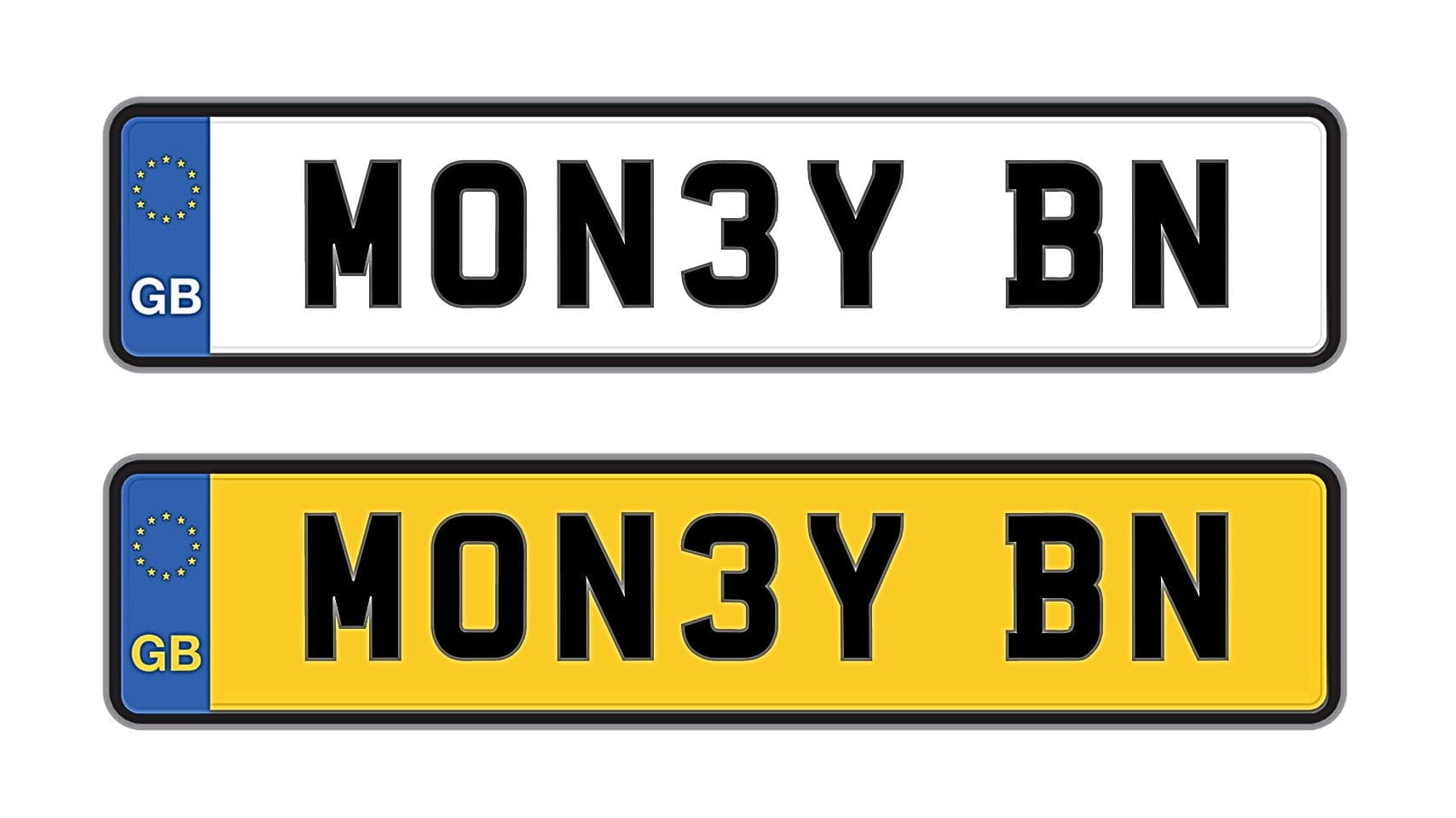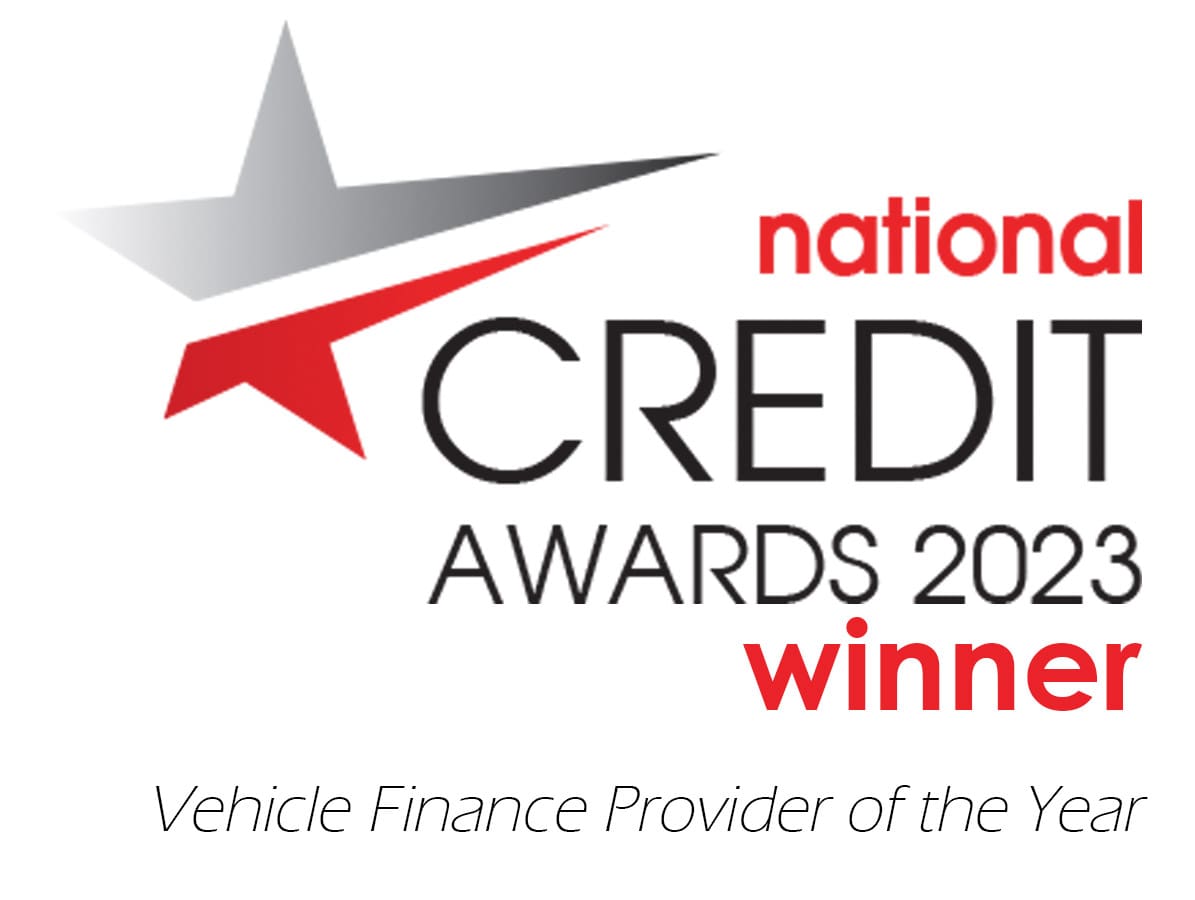- Car finance Car finance
- Motorbike finance Motorbike finance
- Van finance Van finance
- How it works How it works
- FAQs and guides FAQs and guides
- About us About us
- Home
- Blog
- Looking After Your Vehicle
- Can you put private plates on a financed car?
Can you put private plates on a financed car?
Updated: Thursday, 12 September 2024
If you’re looking to buy a car on finance, or have just bought one, you might have private plates you want to use. Whether or not you can put personalised number plates on your financed car depends on your type of finance and the lender you use. It might also change what you need to do if you later end your agreement and return the vehicle.
In this guide, we’ll explain how fitting private number plates on a financed car works, including the requirements and steps you’ll need to follow if you want to do so.
Requirements for putting private registration plates on a financed car
Depending on the type of finance agreement you have, the rules and requirements on whether you can put private plates on your vehicle may differ. Below is general guidance on the most common types of car finance agreements.
However, it’s important to know that we can’t speak for other lenders. If you’re unsure about their policy for fitting private plates, check your contract or speak to your lender.
| Type of car finance | Can you install private plates? | Conditional Sale (CS) | Yes, with permission from your finance company |
|---|---|
| Hire Purchase (HP) | Yes, with permission from your finance company |
| Personal Contract Purchase (PCP) | Yes, with permission from your finance company |
| Personal Loan | Yes |
| Personal Contract Hire (PCH) | Yes, with permission from your leasing company |
Conditional Sale (CS) agreements
You can put a private plate on a vehicle if you have a Conditional Sale (CS) finance agreement, as long as you have the finance company’s permission.
CS finance is the type we offer at Moneybarn. To find out what we can lend you to help you spread the cost of your new car, use our online car finance calculator tool.
Hire Purchase (HP) finance agreements
You can put a private plate on a vehicle if you have a Hire Purchase (HP) finance agreement, but only after getting the permission of your finance provider.
Under an HP agreement, you won’t be the vehicle’s legal owner until you pay the admin fee at the end of the repayment term, so you can’t make any changes to your car without their permission.
Personal Contract Purchase (PCP) finance agreements
Yes, you can use personalised number plates with vehicles on PCP finance agreements, provided you have your lender’s permission.
Personal loans
You immediately become the vehicle’s legal owner when you buy a new or used car with a personal loan (either from a bank or building society). So, if you want to put your private number plate on your car, van, or motorbike, you won’t need to request permission from a finance company.
You will still need to go through the formal application and transfer process by contacting the DVLA online and completing all the paperwork involved.
Leased cars
You can put a private plate on a leased car, but you’ll need to obtain the leasing company’s or dealership’s permission, as they will be the vehicle’s legal owner.
What are private registration plates?
Private registration plates, also called personalised or cherished number plates, are genuine registration plates with a unique combination of letters and numbers that have special relevance to individual drivers. Some people like to choose particular letters and numbers to spell out their name, nickname, or word, just like in the example below.

How to put a private plate on a financed car
If you decide you want to purchase a set of private number plates or put private plates you already own on a newly financed car, there are several steps you’ll need to follow to ensure you’re complying with all the relevant rules.
If you’re looking to buy a car on finance, or have just bought one, you might have private plates you want to use. Whether or not you can put personalised number plates on your financed car depends on your type of finance and the lender you use. It might also change what you need to do if you later end your agreement and return the vehicle.
In this guide, we’ll explain how fitting private number plates on a financed car works, including the requirements and steps you’ll need to follow if you want to do so.
Requirements for putting private registration plates on a financed car
Depending on the type of finance agreement you have, the rules and requirements on whether you can put private plates on your vehicle may differ. Below is general guidance on the most common types of car finance agreements.
However, it’s important to know that we can’t speak for other lenders. If you’re unsure about their policy for fitting private plates, check your contract or speak to your lender.
| Type of car finance | Can you install private plates? | Conditional Sale (CS) | Yes, with permission from your finance company |
|---|---|
| Hire Purchase (HP) | Yes, with permission from your finance company |
| Personal Contract Purchase (PCP) | Yes, with permission from your finance company |
| Personal Loan | Yes |
| Personal Contract Hire (PCH) | Yes, with permission from your leasing company |
Conditional Sale (CS) agreements
You can put a private plate on a vehicle if you have a Conditional Sale (CS) finance agreement, as long as you have the finance company’s permission.
CS finance is the type we offer at Moneybarn. To find out what we can lend you to help you spread the cost of your new car, use our online car finance calculator tool.
Hire Purchase (HP) finance agreements
You can put a private plate on a vehicle if you have a Hire Purchase (HP) finance agreement, but only after getting the permission of your finance provider.
Under an HP agreement, you won’t be the vehicle’s legal owner until you pay the admin fee at the end of the repayment term, so you can’t make any changes to your car without their permission.
Personal Contract Purchase (PCP) finance agreements
Yes, you can use personalised number plates with vehicles on PCP finance agreements, provided you have your lender’s permission.
Personal loans
You immediately become the vehicle’s legal owner when you buy a new or used car with a personal loan (either from a bank or building society). So, if you want to put your private number plate on your car, van, or motorbike, you won’t need to request permission from a finance company.
You will still need to go through the formal application and transfer process by contacting the DVLA online and completing all the paperwork involved.
Leased cars
You can put a private plate on a leased car, but you’ll need to obtain the leasing company’s or dealership’s permission, as they will be the vehicle’s legal owner.
What are private registration plates?
Private registration plates, also called personalised or cherished number plates, are genuine registration plates with a unique combination of letters and numbers that have special relevance to individual drivers. Some people like to choose particular letters and numbers to spell out their name, nickname, or word, just like in the example below.

How to put a private plate on a financed car
If you decide you want to purchase a set of private number plates or put private plates you already own on a newly financed car, there are several steps you’ll need to follow to ensure you’re complying with all the relevant rules.

Ask for permission from your finance company
Before you put a private plate on a financed car, you must get permission from the finance company. You may want to check the terms and conditions of your agreement first to make sure there’s nothing stating that you can’t change the registration plates on your vehicle.
Assuming your finance company accepts requests to put personalised number plates on its cars, you can contact them to ask for the go-ahead to contact the Drivers and Vehicle Licensing Agency (DVLA) and change your car’s registration plates.

Ask for permission from your finance company
Before you put a private plate on a financed car, you must get permission from the finance company. You may want to check the terms and conditions of your agreement first to make sure there’s nothing stating that you can’t change the registration plates on your vehicle.
Assuming your finance company accepts requests to put personalised number plates on its cars, you can contact them to ask for the go-ahead to contact the Drivers and Vehicle Licensing Agency (DVLA) and change your car’s registration plates.

Update the nominee details for your new number plate
Next, you’ll need to update the nominee details on the Certificate of Entitlement (V750) of your personalised plates to those of your finance company.
Even though this might seem odd, given that your personal number plate is likely of little relevance to your lender, you need to transfer ownership of the plates to the owner of the vehicle. In the case of a financed or leased car, the owner is the finance provider or dealership, not the customer.

Update the nominee details for your new number plate
Next, you’ll need to update the nominee details on the Certificate of Entitlement (V750) of your personalised plates to those of your finance company.
Even though this might seem odd, given that your personal number plate is likely of little relevance to your lender, you need to transfer ownership of the plates to the owner of the vehicle. In the case of a financed or leased car, the owner is the finance provider or dealership, not the customer.

Send the documentation to the DVLA
Once all the necessary documentation is complete, you must send it to the DVLA by post or online. You’ll also need to send your V5C log book, as this will need to be updated to reflect the change in the registration plate for your vehicle.

Send the documentation to the DVLA
Once all the necessary documentation is complete, you must send it to the DVLA by post or online. You’ll also need to send your V5C log book, as this will need to be updated to reflect the change in the registration plate for your vehicle.

Wait for confirmation that the transfer is complete
Depending on your communication preferences, the DVLA will notify you that the number plate transfer is complete, either by email or post. As with any official vehicle documentation, keeping a copy of this confirmation is important.

Wait for confirmation that the transfer is complete
Depending on your communication preferences, the DVLA will notify you that the number plate transfer is complete, either by email or post. As with any official vehicle documentation, keeping a copy of this confirmation is important.

Notify your insurance company of the change
When you insure a vehicle, you need to provide the vehicle registration number to the insurer. If you change the plates on your car mid-way through an insurance policy, you may need to notify your insurance provider. Failure to do this may mean your car insurance is invalid.

Notify your insurance company of the change
When you insure a vehicle, you need to provide the vehicle registration number to the insurer. If you change the plates on your car mid-way through an insurance policy, you may need to notify your insurance provider. Failure to do this may mean your car insurance is invalid.

Update any automatic payment accounts
If you’re a driver that pays the Congestion Charge, the Ultra-Low Emission Zone Charge, the Dart Charge, and/or Clean Air Zone charges, the automatic payments associated with those charges use Automatic Number Plate Recognition (ANPR) and are linked with your car’s registration plate. If you don’t update your details online to recognise the change in your vehicle’s registration number, you may get a penalty charge each time you drive into one of the above zones.
Visit the GOV.UK page for more information about who to notify and what to update. It’s also a good idea to update your account details on any online or app-based parking payment services to avoid getting parking tickets.

Update any automatic payment accounts
If you’re a driver that pays the Congestion Charge, the Ultra-Low Emission Zone Charge, the Dart Charge, and/or Clean Air Zone charges, the automatic payments associated with those charges use Automatic Number Plate Recognition (ANPR) and are linked with your car’s registration plate. If you don’t update your details online to recognise the change in your vehicle’s registration number, you may get a penalty charge each time you drive into one of the above zones.
Visit the GOV.UK page for more information about who to notify and what to update. It’s also a good idea to update your account details on any online or app-based parking payment services to avoid getting parking tickets.
What happens to my personalised plates when my finance agreement ends?
If you have private number plates on a financed car, you may need to organise getting them removed before the agreement ends, though this depends on your contract.
With Conditional Sale (CS) finance agreements, if you complete the full agreement term, you’ll automatically become the vehicle’s legal owner when you make the last repayment to your lender, or the same if you settle the agreement fully early. Being the registered owner, you won’t need to remove the private plates if you don’t want to. However, if you end a CS agreement early via another route, for example voluntary termination, then you will return the vehicle to the lender and you may need to remove or request the private plate if you want to keep it.
Similarly, with Hire Purchase (HP) finance agreements, it’s assumed that you will become the vehicle’s legal owner at the end of the repayment period by making a one-off admin fee to your lender. If you don’t want to own the vehicle, you will need to update the nominee details to the original number plate before handing it back to the finance company.
Under other types of finance agreements, namely Personal Contract Purchase (PCP), there is less of an expectation that you will choose to buy the car outright at the end of the repayment period. If you have one of these types of agreements, you’ll need to follow the same process and update the nominee details back to the original plates before returning the car.
If you put a private personalised plate on a car under a PCP deal, you can transfer the plates to a new car when your current agreement ends. For example, if you choose not to buy the car outright by making the final balloon payment and trading it in for a different vehicle, you can arrange to reassign your private number plate.
You can speak to your finance provider for more information and support.
Car finance with Moneybarn
At Moneybarn, we work to ensure that financing your next vehicle is as easy and rewarding as possible. We help thousands of drivers up and down the UK each year get the car, van, or motorbike they need, even if previous lenders have refused their applications.
To find out what we might be able to lend you and what your monthly repayments could look like, use our online car finance calculator. Then, when you’re ready, get a quote and get started on your journey towards the better road ahead.
Representative 30.7% APR.
FAQs about putting private plates on a financed car
Why do people want to change their vehicle's registration plate?
Sometimes, private or personalised number plates can be expensive, so owners are understandably keen to keep using them when changing vehicles. Beyond this, some people choose to use personalised plates to make their cars easier to recognise.
What happens to a car's original number plate after you change to personalised plates?
The original number plate will go into ‘retention’, meaning the vehicle’s owner can still use it for the next 10 years. If you give the car back to the finance provider at the end of your agreement or want to take your private plate off the vehicle for any reason, the original plate assigned to it when it was first registered with the DVLA will likely be reassigned.
Can I take my private plate off my car?
If you want to take your private registration plate off a financed car for any reason, you can apply online via the GOV.UK website and pay a fee of £80 to cover the administrative costs involved. The DVLA will send you a V778 retention document and updated logbook (V5C) to prove you can still use the plate for 10 years.
If you decide to do this with a financed car, you may need to provide the finance company with a copy of the updated V5C for their records. This may be a requirement depending on your contract, but we can’t speak for other companies. If you’re unsure, check your contract or speak to your car finance company.
What happens to my personalised plates when my finance agreement ends?
If you have private number plates on a financed car, you may need to organise getting them removed before the agreement ends, though this depends on your contract.
With Conditional Sale (CS) finance agreements, if you complete the full agreement term, you’ll automatically become the vehicle’s legal owner when you make the last repayment to your lender, or the same if you settle the agreement fully early. Being the registered owner, you won’t need to remove the private plates if you don’t want to. However, if you end a CS agreement early via another route, for example voluntary termination, then you will return the vehicle to the lender and you may need to remove or request the private plate if you want to keep it.
Similarly, with Hire Purchase (HP) finance agreements, it’s assumed that you will become the vehicle’s legal owner at the end of the repayment period by making a one-off admin fee to your lender. If you don’t want to own the vehicle, you will need to update the nominee details to the original number plate before handing it back to the finance company.
Under other types of finance agreements, namely Personal Contract Purchase (PCP), there is less of an expectation that you will choose to buy the car outright at the end of the repayment period. If you have one of these types of agreements, you’ll need to follow the same process and update the nominee details back to the original plates before returning the car.
If you put a private personalised plate on a car under a PCP deal, you can transfer the plates to a new car when your current agreement ends. For example, if you choose not to buy the car outright by making the final balloon payment and trading it in for a different vehicle, you can arrange to reassign your private number plate.
You can speak to your finance provider for more information and support.
Car finance with Moneybarn
At Moneybarn, we work to ensure that financing your next vehicle is as easy and rewarding as possible. We help thousands of drivers up and down the UK each year get the car, van, or motorbike they need, even if previous lenders have refused their applications.
To find out what we might be able to lend you and what your monthly repayments could look like, use our online car finance calculator. Then, when you’re ready, get a quote and get started on your journey towards the better road ahead.
Representative 30.7% APR.
FAQs about putting private plates on a financed car
Why do people want to change their vehicle's registration plate?
Sometimes, private or personalised number plates can be expensive, so owners are understandably keen to keep using them when changing vehicles. Beyond this, some people choose to use personalised plates to make their cars easier to recognise.
What happens to a car's original number plate after you change to personalised plates?
The original number plate will go into ‘retention’, meaning the vehicle’s owner can still use it for the next 10 years. If you give the car back to the finance provider at the end of your agreement or want to take your private plate off the vehicle for any reason, the original plate assigned to it when it was first registered with the DVLA will likely be reassigned.
Can I take my private plate off my car?
If you want to take your private registration plate off a financed car for any reason, you can apply online via the GOV.UK website and pay a fee of £80 to cover the administrative costs involved. The DVLA will send you a V778 retention document and updated logbook (V5C) to prove you can still use the plate for 10 years.
If you decide to do this with a financed car, you may need to provide the finance company with a copy of the updated V5C for their records. This may be a requirement depending on your contract, but we can’t speak for other companies. If you’re unsure, check your contract or speak to your car finance company.
Bringing you guides to help with your vehicle finance agreement and showcasing customers we’ve helped.
For a better road ahead
Moneybarn is a member of the Finance and Leasing Association, the official trade organisation of the motor finance industry. The FLA promotes best practice in the motor finance industry for lending and leasing to consumers and businesses.
Moneybarn is the trading style of Moneybarn No. 1 Limited, a company registered in England and Wales with company number 04496573, and Moneybarn Limited, a company registered in England and Wales with company number 02766324. The registered address for these companies is: Athena House, Bedford Road, Petersfield, Hampshire, GU32 3LJ.
Moneybarn’s VAT registration number is 180 5559 52.
Moneybarn Limited is authorised and regulated by the Financial Conduct Authority (Financial Services reference No. 702781)
Moneybarn No. 1 Limited is authorised and regulated by the Financial Conduct Authority (Financial Services reference No. 702780)




